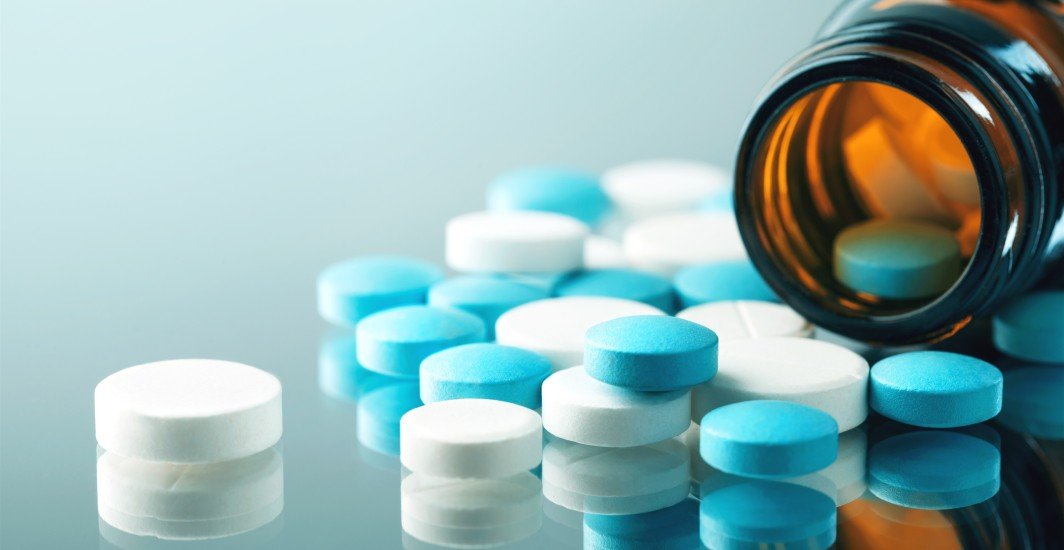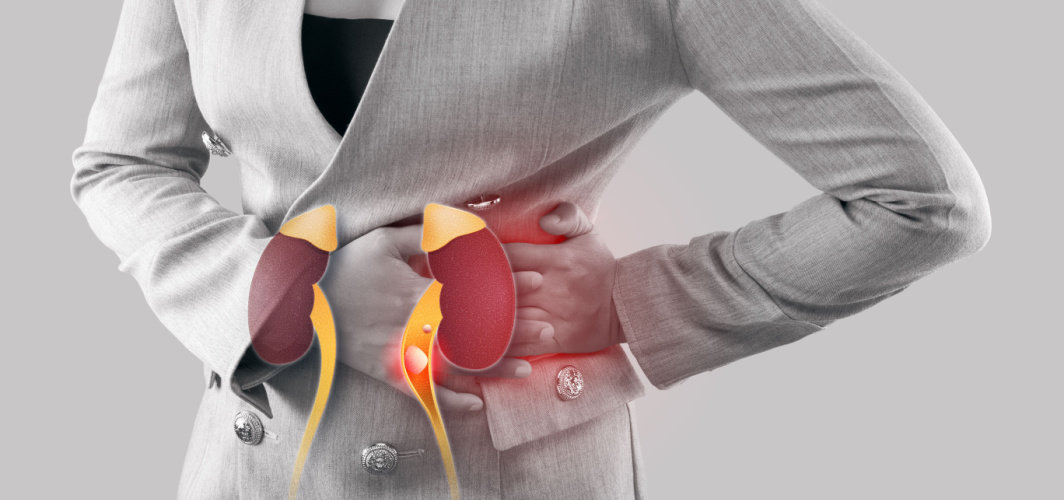- Home
- Blog
- General Health
Lower Abdominal Pain: Causes, Symptoms and Treatment
General Health
Lower Abdominal Pain: Causes, Symptoms and Treatment
By Apollo Pharmacy, Published on- 28 August 2023, Updated on -23 August 2024
Share this article
0
0 like

Lower stomach or abdominal pain is one of the most common issues reported by people. The pain can vary in intensity, duration and location. It can occur on the left or right side of the abdomen or between the lower ribcage and the pelvis, resulting in discomfort and sometimes even severe pain. Understanding lower abdominal pain is crucial as it can help to identify the underlying condition and guide appropriate treatment.
5 Common Causes of Lower Abdominal Pain
Some of the most common causes of lower abdominal pain include:
1. Gastrointestinal Causes
Lower abdominal pain can be caused by various gastrointestinal issues, some of which include:
A. Irritable bowel syndrome (IBS)
- Irritable Bowel Syndrome is a chronic disorder that affects the large intestine. It can cause abdominal pain, cramping, bloating, gas and changes in bowel movements.
- Diagnosis of IBS involves ruling out other conditions and assessing symptoms over time.
- Treatment options may include dietary changes, stress management and appropriate anti-diarrhoeal medications and medicines to relax the bowel.
B. Inflammatory bowel disease (IBD)
- Inflammatory Bowel Disease includes Crohn's disease and ulcerative colitis, which cause chronic inflammation in the digestive tract.
- Symptoms of IBD can include abdominal pain, diarrhoea, weight loss and fatigue.
- Diagnosis involves a combination of medical history, physical exams, imaging tests and biopsies.
- Treatment options may include medications to reduce inflammation and manage symptoms.
C. Diverticulitis
- Diverticulitis occurs when small pouches in the colon become inflamed or infected.
- Symptoms may include abdominal pain, fever, nausea and changes in bowel habits.
- Diagnosis is typically made through physical exams, blood tests, imaging studies (such as CT scans) and stool tests.
- Treatment options may include antibiotics, pain relief medication, dietary changes and sometimes surgery.
D. Gastroenteritis
- Gastroenteritis is an infection or inflammation of the stomach and intestines often caused by viruses or bacteria.
- Symptoms can include abdominal pain, diarrhoea, vomiting, fever and nausea.
- Treatment for gastroenteritis focuses on rest, hydration and symptom relief. Severe cases may require medical intervention or hospitalisation.
2. Genitourinary Causes
The two most common genitourinary causes of lower abdominal pain are urinary tract infections (UTIs) and kidney stones.
A. Urinary Tract Infections (UTIs)
- UTIs occur when bacteria enter the urinary tract, leading to infection, the most common type being a bladder infection.
- Symptoms of a UTI may include a frequent urge to urinate, pain or burning during urination, cloudy or strong-smelling urine and pelvic pain.
- A medical professional can diagnose a UTI through a urine test or urine culture test.
- The treatment may include specific antibiotics to treat the infection.
B. Kidney stones
- Kidney stones are hard mineral and salt deposits that form in the kidneys. They can cause severe pain when they move from the kidneys to the urinary tract.
- Common symptoms of kidney stones include lower abdominal pain that radiates to the back or groyne, blood in the urine and changes in urination patterns.
- Diagnostic methods such as imaging tests (ultrasound, CT scan) and blood tests such as kidney function tests can help detect kidney stones.
- Treatment for kidney stones depends on their size and location. Options include drinking plenty of fluids to help pass smaller stones, medication to relieve pain and facilitate stone passage or procedures like lithotripsy or surgery for larger stones.
3. Gynaecological Causes
The two common gynaecological causes of lower abdominal pain are pelvic inflammatory disease (PID) and endometriosis.
A. Pelvic Inflammatory Disease (PID)
- PID is an infection of the reproductive organs, most commonly caused by sexually transmitted infections like chlamydia or gonorrhoea.
- It can cause lower abdominal pain, along with other symptoms such as fever, abnormal vaginal discharge and pain during intercourse.
- If left untreated, PID can lead to complications like infertility or an increased risk of ectopic pregnancy.
B. Endometriosis
- Endometriosis is a condition where tissue similar to the lining of the uterus grows outside the uterus.
- This can cause chronic pelvic pain, including lower abdominal pain, as well as painful periods and infertility. The exact cause of endometriosis is unknown, but hormonal and immune system factors may play a role.
- Diagnosis of PID and endometriosis involves a thorough medical history, physical examination and sometimes imaging or laparoscopy.
- Treatment options for PID include antibiotics to treat the infection and pain relief medications. Endometriosis can be managed through pain medication, hormonal therapies or surgery to remove the abnormal tissue.
4. Musculoskeletal Causes
- Sometimes muscle strain or injury to the left or right side of the abdomen may result in lower abdominal pain.
- Muscle strains can happen due to sudden movements, overexertion or improper lifting techniques.
- Common symptoms include pain, tenderness, swelling and limited mobility.
- Resting, applying ice or heat and taking over-the-counter pain relievers can help alleviate the pain.
- In severe cases, medical interventions such as physical therapy or muscle relaxants may be necessary.
5. Psychological Causes
- The mind-body connection plays a significant role in lower abdominal pain.
- Psychological causes like stress and anxiety can trigger abdominal discomfort and increase muscle tension in the abdomen, leading to pain.
- Coping mechanisms and stress management techniques like deep breathing exercises, mindfulness meditation, regular exercise and seeking support from loved ones or professionals can help alleviate abdominal pain caused by stress.
When to Consult a Doctor?
Some cases of lower abdominal pain may require immediate attention, while others may necessitate consultation with a healthcare professional for further evaluation and diagnosis. Here are some guidelines to help you know when it is time to reach out for medical assistance:
- Sudden and severe abdominal pain
- Persistent pain that worsens over time
- Abdominal pain accompanied by a high fever
- Vomiting blood or passing bloody stool
- Difficulty breathing or shortness of breath
- Recurring or chronic lower abdominal pain
- Pain that interferes with daily activities and quality of life
- Pain that lasts for more than a few days
- Pain that is associated with other concerning symptoms such as weight loss, changes in bowel habits or urinary problems
Seeking timely medical attention can help identify the underlying cause of your lower abdominal pain and ensure appropriate treatment.
Summary
Experiencing lower abdominal pain can be distressing, hence, it is essential to seek medical advice for a proper diagnosis and treatment plan. Remember, self-diagnosis can be risky, as it is difficult to determine the underlying cause without medical expertise. A healthcare professional will carefully assess your symptoms, perform a physical examination and order relevant tests to identify the root cause of your lower abdominal pain.
Services
General Health
Frequently asked questions
You should seek immediate medical help if you experience severe or persistent pain that worsens over time and abdominal pain accompanied by high fever, vomiting or blood in stool or urine.
Yes, certain lifestyle factors like stress, sedentary lifestyle and poor diet can contribute to lower abdominal pain.
Medical history evaluation and physical examination, blood and urine tests, imaging tests (ultrasound, CT scan or X-ray) and endoscopic procedures for a closer look at internal organs help with diagnosing lower abdominal pain.
Lower abdominal pain can be managed at home by taking rest and avoiding strenuous activities, applying a heating pad to soothe the area, taking over-the-counter pain medications for temporary relief, and maintaining a healthy diet with fibre-rich foods and plenty of fluids.
Leave Comment
Services
Recommended for you

General Health
Metrogyl 400 Tablet: Uses for Infections, Dosage & Warnings
Discover how Metrogyl 400 Tablet helps treat bacterial and parasitic infections. Learn about its common uses, recommended dosage, and important precautions to ensure safe and effective treatment.

General Health
I want to get my periods immediately. Suggest medicine for me to get periods within a day.

General Health
How To Know If You Have Kidney Stones?
Discover the signs of kidney stones such as intense pain, blood in urine, nausea & more. Learn how to recognise symptoms and seek timely medical advice.
Subscribe
Sign up for our free Health Library Daily Newsletter
Get doctor-approved health tips, news, and more.

